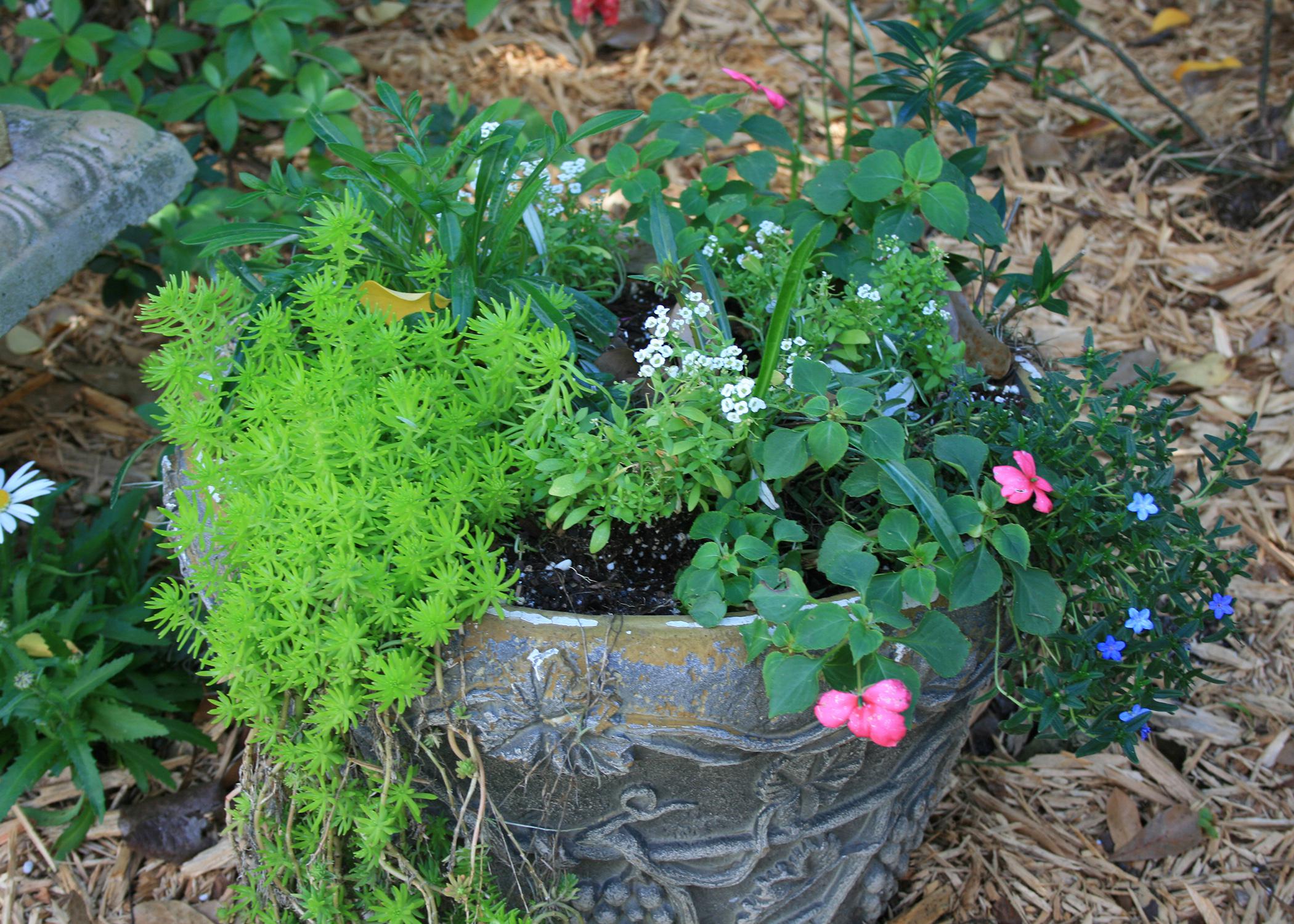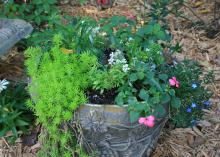Information Possibly Outdated
The information presented on this page was originally released on February 28, 2022. It may not be outdated, but please search our site for more current information. If you plan to quote or reference this information in a publication, please check with the Extension specialist or author before proceeding.
Commercial mixes bring container garden success
This week marks the official beginning of meteorological spring, and that means it’s time to start getting our gardens and landscapes ready for the coming year.
One of the first tasks may be to get your containers ready, as more and more home gardeners are becoming interested in the joys of growing plants in containers.
One of the most important considerations for successfully growing in containers is the selection of the commercial container mix. These products are engineered to have optimal physical characteristics for growing plants in containers.
It can be confusing to choose the right container mix at the garden center. The names, in particular, can be challenging, as words like “potting,” “container,” “soilless” and “soil” all seem to be used in an interchangeable word salad.
To choose the right commercial mix for growing in containers, you must be aware of the ingredients used in each product. Just like products at the grocery store, commercial container mixes have an ingredients list printed on the bag.
A great basic container mix has the highest percentages of peat, sphagnum peat or coir, which is coconut fiber. You also want to see that the mix includes vermiculite, perlite or both, as these products help keep the mix light and airy. If the mix has any kind of compost, sedge peat or soil, it is not meant for growing plants in containers.
Commercial container mixes can be modified from the basic recipe to address the needs of various plant selections.
For example, succulent plants and herbs generally prefer a mix that is coarse-textured and doesn’t hold much moisture. Foliage and tropical plants generally like a fine-textured mix that is well-drained but holds a little more water. There are even certified organic potting mixes.
Commercial container mixes that have formulations with great water-holding capacity can help reduce a plant’s water demands.
Many commercial container mixes have some fertilizer added. It helps give your plants a jump start, but there is not enough to sustain growth through the season. You must add supplemental fertilizer as needed.
Commercial bagged container mixes are shipped with the contents as dry as possible because it reduces weight and ultimately shipping costs. Dry container mixes need to be moistened before use.
If you have a small amount to moisten, then you can mix it in a small basin with water. I tend to use quite a lot of container mix, so I just open the bags and pour one to two gallons of water directly inside. This process works well for two cubic foot bags. After a couple of hours, the container mix is ready to use.
You can find lots of recommendations about how to fill large containers, primarily because large containers can be expensive to fill with commercial container mix. Many suggest using plastic foam, aluminum cans (which I have recommended in the past), or other light, cheap material to take up space.
But I’ve found a better suggestion straight out of the latest nursery production research. Try using large pine bark chips that are readily available for use mulching landscape beds. I’ll be trying this idea this year.
Fill the bottom one-third to one-half of the pot with large pine bark pieces, and fill the rest with commercial container mix. This strategy works because plant roots never go to the bottom of large containers and stay in the good container mix.
If you’d like more information of the components of commercial container mixes, see the Southern Gardening TV segment “Potting Mix,” at .




